I regret to inform you of this, but I can’t keep it to myself any longer:
My partner thinks cantaloupe isn’t any good.
There. I said it.
This dirty little secret is one that I’ve carried with me and fought against for years, often depriving myself of the (imagined) juicy delights of a sweet and perfectly ripened orange-fleshed melon – for fear of bringing one into the house that might be less than perfect.

We link to vendors to help you find relevant products. If you buy from one of our links, we may earn a commission.
In case you’re worried this dear, sweet human that I call my husband is something of a tyrant, I don’t want you to get the wrong impression.
Far, far on the opposite end of the spectrum in terms of dictatorial mannerisms, I assure you, he’s all about homegrown produce, and loves bringing big hauls of fresh fruits and vegetables into the kitchen from our local farm box delivery service or the farmers market.
Back in the days when you were allowed to try a sample, he’d go wild.
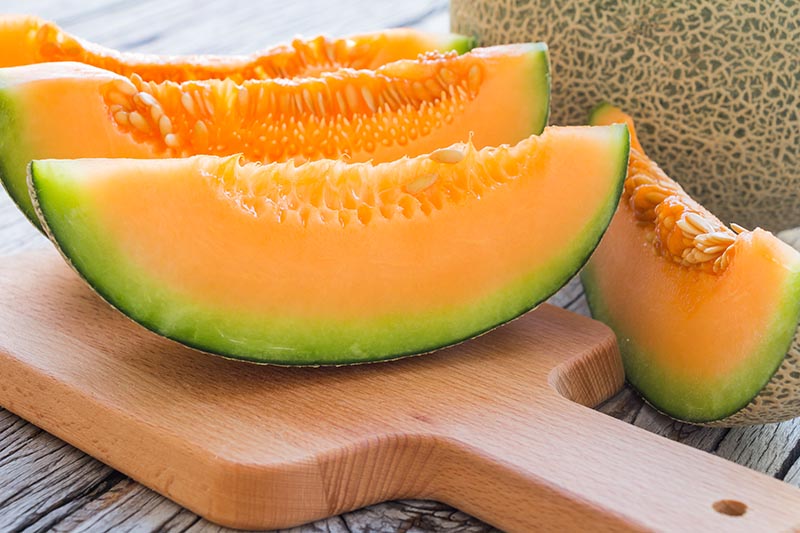
And that’s really the issue at hand. The ability to try before you buy isn’t always available to us.
Fruit is a variable product, and quality can range from the irresistibly succulent to… well, something that you might be more inclined to spit out and eschew forever.
You’re more likely to get something sweet, delicious, and perfectly ripe when you can grow it yourself. And when it comes to certain items like stone fruit and melons, my bestie and eternal housemate is in fact something of a fruit connoisseur.
Can you blame him for judging all store-bought cantaloupe poorly, unless proven otherwise?
After too many childhood fruit cups filled with pre-cut grocery store melon that was picked, chopped, and packed far too soon, rather than face even one more chunk of pale, dry, unappealing cantaloupe, he’d rather skip it altogether.
Unless peak ripeness can be assured, that is.
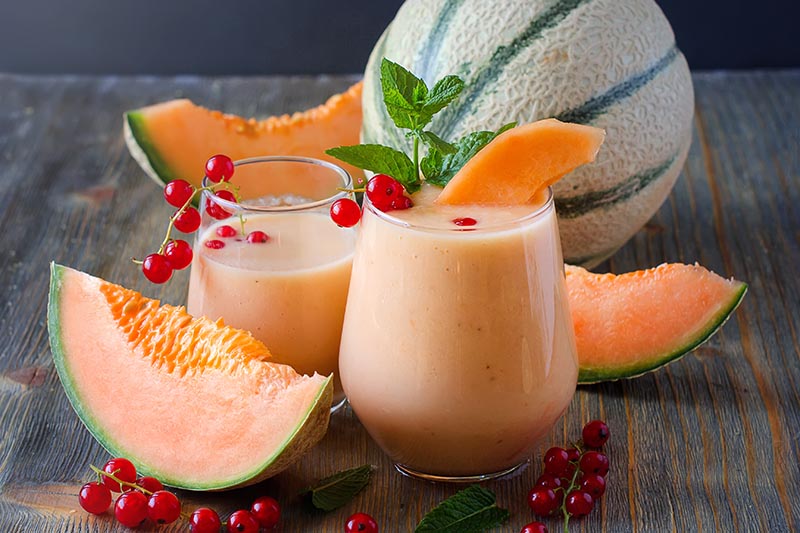
And that’s where this roundup comes in. One of the best parts of growing your own cantaloupe at home is that you get to choose when to pluck those webbed orbs from the vine, letting your senses guide the way, and you get to decide when to make that first slice to reveal the juicy goodness inside.
I’m not about to ask you to stop counting your chicken melons before they hatch. I have dreamed about far more cantaloupe (and honeydew) than I’ve actually consumed over the past decade and a half, after all.
But before you get to sowing or transplanting, fertilizing and watering, tending to pollination, and finding joy (and occasional aggravation – what are those spots, and these bugs??) in all the various tasks required to bring these cheery vine fruits to harvest, you have a decision to make:
Which cultivar to plant?
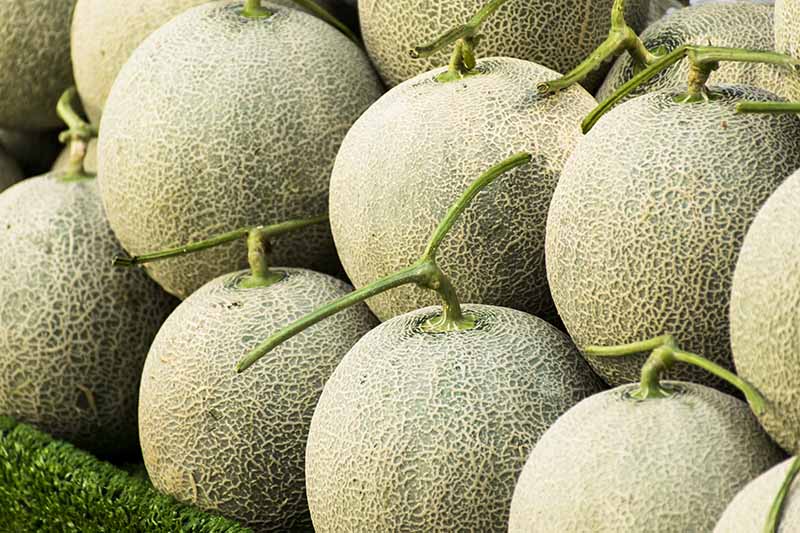
While the grocery store might offer a simple generic “cantaloupe” with no additional identifying features, and you may even be lucky to find a few different cultivars for sale from a local farmer, I’m betting you had no idea there were so many delicious types out there to choose from.
Many are named after goddesses, with an emphasis on beauty. Some of them are jumbo, others diminutive. All of them are amazing, if you ask me. But I’ll try, for your sake, to be a little more discerning.
It wasn’t easy to narrow down this roundup of top cantaloupe cultivars to just 11. But I did it, to make your decision a little easier. Even connoisseurs can be plagued by the paradox of choice…
To help reduce your own potential tendency towards plant picking panic, I’ve put together this list of my favorites, from A to Z.
11 of the Best Cantaloupe Cultivars
11 of the Best Cantaloupe Cultivars
A variety of muskmelon (Cucumis melo), there are two main variants of this species. C. melo var. reticulatus hails from North America, whereas C. melo var. cantalupensis comes from Europe.
Some would argue that cultivars of the reticulatus variety are not in fact “true” cantaloupe but rather, other types of muskmelons. But since the late 1800s when cantaloupe was first used as a marketing term for all types of melon shipped throughout the US in crates, the name (and associated oversimplification) has stuck.
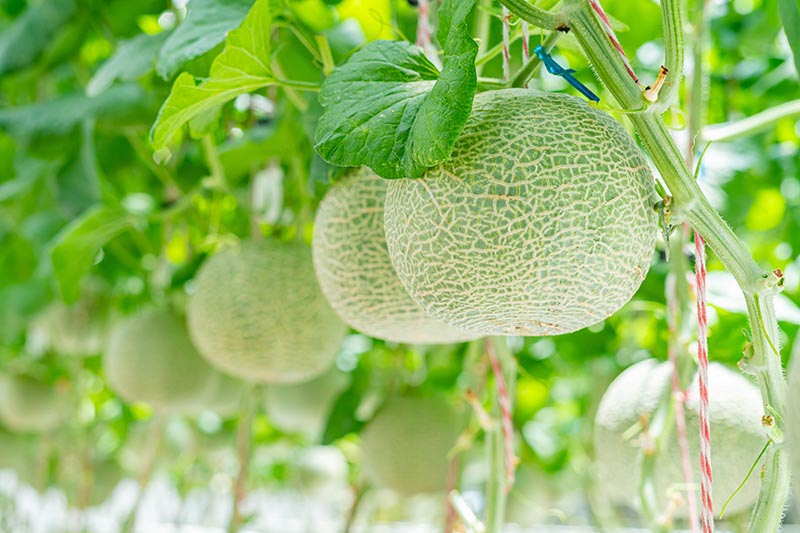
A few quick details to cover:
First, cantaloupe are generally beige or tan to greenish in color, and the rinds are covered with netting. Most varieties are also ribbed, or covered with what are known as “sutures,” grooves of varying depth that typically start light green and darken as the fruit matures.
Next up, though most of our roundups of recommended cultivars include plant height and spread information, I’ve found that cantaloupe descriptions in particular do not often include these specifics, unless they are particularly noteworthy. When growing cantaloupe, be sure to give them plenty of space to do their thing.
Finally, many cantaloupe types are further broken down into Western and Eastern varieties in the US.
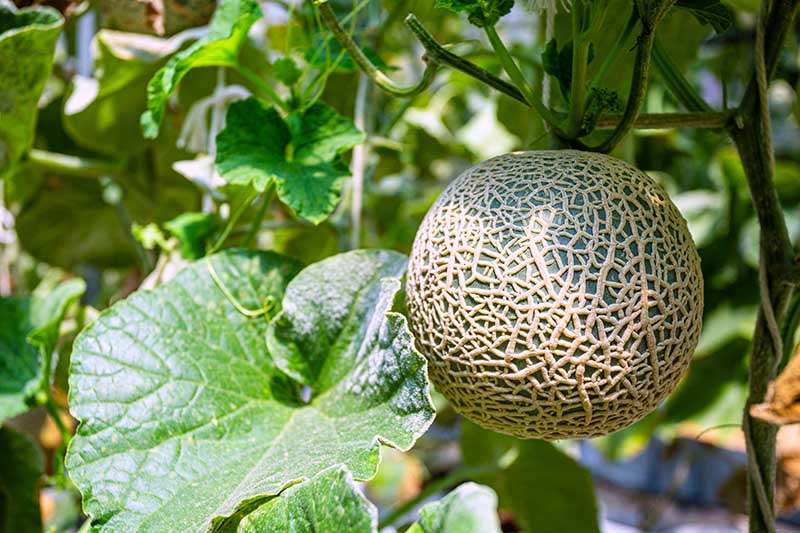
Western cultivars are what you’re most likely to see in supermarkets. These weigh an average of two to four pounds, with heavy netting (that’s netting, with an N), shallow sutures, and small seed cavities for the maximum quantity of flesh per melon.
Most of the Western types produce uniform melons that are perfect for commercial growers to sell, and they hold up well in transit, hence their alternative moniker: “shipping” cantaloupe. In fact, they’re often picked before they’re fully ripe at the “half-slip” stage, when stems still require a bit of extra coaxing to release the fruit.
Eastern types, on the other hand, are generally a bit bigger at five to eight pounds each, with more subtle netting, deep sutures, and a larger seed cavity. If you don’t see the name Eastern, these are also sometimes referred to as “jumbo” – more on that later.
You’ll find information detailing the special characteristics of each of my top picks here, including days to harvest, mature melon weight, and more.
So polish up those melon ballers, and let’s dig in!
1. Aphrodite Hybrid
Presumably named after the Greek goddess of love, passion, beauty, and desire, ‘Aphrodite’ is an Eastern type known for its sweet, succulent fruit.
Plant a few of these and leave a little room to roll around between the rows with your lover, inhaling the musky scent of burgeoning Olympian fruit. The vines still like to sprawl but they are shorter than those of some types, with a more compact growth habit.
Heavy netting, slight sutures, and orange flesh mark this variety, which is said to have a honey-like flavor.
Melons weighing six to eight pounds each mature in 72 days. One of the earliest to be ready, if you have a short growing season or you want to be the first in your neighborhood to enjoy some homegrown cantaloupe, this is the perfect pick.
Do these melons have aphrodisiac properties, as their name suggests? You’ll have to grow your own and taste one to find out.
This type is resistant to fusarium wilt and powdery mildew.
Packets of 25 seeds are available from Burpee.
2. Athena Hybrid
Another standout on the goddess roster, ‘Athena’ is named for the Greek goddess of wisdom and war, a helper of ancient heroes.
If you need a little extra assistance in the melon patch, I’d plant this type for luck. It’s another Eastern cultivar, particularly suited to Southeastern climates.
Known for its high quality in terms of texture, flavor, and aroma, these beauties also boast a shelf life that’s a bit longer than what’s typical for other varieties, a plus if you aren’t able to eat your entire harvest right away.
Nearly round fruit with coarse netting and no sutures on the outside, and firm orange flesh on the inside, grow to about five or six pounds. They’ll reach maturity in 75 days.
‘Athena Hybrid’ is resistant to powdery mildew, downy mildew, and fusarium wilt. It’s also one of several varieties of cantaloupe recommended by the experts at the Penn State Extension for growers in Pennsylvania. Where are my gardeners in the Mid-Atlantic at? You should expect good results if you pick this type.
Seeds are available in a variety of package sizes from True Leaf Market.
3. Ball 2076 Hybrid
An improved version of the ‘Ball 1776’ cultivar, perhaps the breeder who named this one had an eye toward the US tricentennial celebration (the cantaloupe of the future!).
The Ball Seed company touts this type as their best tasting melon, with a super sweet flavor – that’s out of this world!
Okay, I added that last part. But 2076… imagine the possibilities!
Heavily netted large fruit of about five pounds each reach maturity in 85 days. They have thin rinds, and juicy orange flesh.
‘Ball 2076 Hybrid’ is resistant to alternaria, powdery mildew, and downy mildew.
Seeds are available from True Leaf Market.
4. Charentais
An open-pollinated heirloom with origins tracing back 100 years to the Poitou-Charentes region of France, this melon was first brought to market by the Randon family and it’s been beloved ever since.
Described as “the quintessential French melon” and “the best melon ever developed,” the salmon-colored flesh has an exceedingly pleasant, super sweet flavor and an ambrosial aroma reminiscent of tropical fruit.
With soft skins, this type is a unique delicacy that does not ship well. Unless you have a chance to visit this region of France when these coveted cantaloupes are in season, you’re not likely to find them in local markets.
Save yourself the struggle of a long-distance relationship and keep the romance alive by growing these in your own garden instead.
‘Charentais’ takes about 85 days to reach maturity. Netted skin marked with gray-green striped sutures surrounds the pinkish-orange flesh.
The fruit averages two to three pounds each, so a single softball-sized orb is perfect for splitting with your best bud after you pluck it from the vine.
Seeds are available from Eden Brothers.
5. El Gordo Hybrid
I’m not about to fat-shame a melon. The name really says it all with ‘El Gordo,’ though the choice of name here was a bit blunt, to say the least. This melon’s tempting curves and voluptuous size are qualities to be celebrated.
This F1 hybrid – get ready for it – can weigh up to 30 pounds at maturity. That’s like a whole season’s worth of cantaloupe combined in just one fruit!
This Eastern type matures in 75 to 80 days. Netted oblong fruit with pale green sutures grow to a Rubenesque 15 to 20 pounds each on average.
You can expect plenty of sweet medium-orange flesh that’s perfect for eating fresh, juicing, and adding to smoothies, and you can make big batches of cantaloupe ice cream and sorbet with whatever you have left over.
If you’re going for whoppers, be sure to cull some of the flowers early in the season so the vines can focus their energy on producing just a few fruit. Typically, these will yield three to four fruits per plant.
‘El Gordo’ is resistant to powdery mildew and watermelon mosaic virus.
Seeds are available from Home Depot.
6. Hearts of Gold
Like Neil Young, I’ve been to Hollywood and the land of the redwoods, crossed the ocean too, and continually dreamed of the perfect cantaloupe.
Maybe he didn’t have fruit in mind when he wrote the lyrics to his famous song, but Young and I (and I’m sure all of you gardeners out there reading this as well) have one thing in common: we all keep searching for that heart of gold.
So, I present to you ‘Hearts of Gold.’ This just might be the one.
This heirloom variety has a history dating back to around 1895, when it was developed by Roland Morill of Benton Harbor, Michigan. He claimed it was the product of an accidental cross between ‘Osage’ and ‘Netted Gem,’ both of which are quality cantaloupe cultivars in their own right.
And what a happy accident that was.
Trademarked in 1914, this was one of the most popular types of melon in the Midwest until the 1930s. Thankfully, even after it went out of fashion among commercial growers as other types became available, seed-savers preserved this cultivar and continued growing it for generations. It’s worth a shot in your garden today!
Growing on vigorous vines, you can expect good yields of three-pound fruit, with deep orange flesh that’s thick and sweet, in about 80 to 90 days.
The melons are nearly round and heavily netted, with moderate ribbing and thin rinds. Small seed cavities mean there’s plenty of room for the tasty flesh.
Packets of 50 seeds are available from Burpee.
7. Olympic Express Hybrid
Have your own Summer Olympics at home, with ‘Olympic Express.’ With this type, you just might win the race to be the first among your gardening friends to get a sweet and delicious melon on the table.
What is the Olympic Express exactly? I imagine it in locomotive form as something akin to Agatha Christie’s Orient Express, filled with murder and intrigue and plenty of tea and cognac in the dining car… but au naturel, with passengers as unadorned as they were on the day they were born, as in the style of the original Olympic Games.
Wait, sorry. I must have drifted off for a second there, into the realm of daydreams. We’re talking about cantaloupe here!
This early-maturing Western variety produces fruit that’s ready to pick in about 75 days, with melons weighing six to seven pounds each.
The orange flesh is sweet, crisp, and firm, with a small cavity. And the plants are resistant to fusarium wilt and powdery mildew.
Seeds are available from Burpee.
8. Planters Jumbo
Marketed as another big boy (or so I thought…), in comparison to ‘El Gordo,’ I’ve gotta say – when I was first introduced to this type and compared his name with his mug shot, I was not convinced.
When you’ve got melons that can attain a weight of up to 30 pounds growing out back, being told that a cultivar expected to yield fruit of “only” four to five pounds is going around calling himself Jumbo, that just leaves me saying, “Huh?”
At first, I wondered, was somebody having a little fun with this one? Did the breeder have visions of Planters peanuts and elephants and who knows what on the brain, maybe after a little too much time spent hard at work in the greenhouse?
I wasn’t really sure. I could only assume that whoever named these “giants” was not familiar with our pal Gordo.
But do you remember a little earlier when I was describing the Eastern types and I said, “more on that later”? You’ve witnessed firsthand a bit of time-travel with that revelation (shades of ‘Ball 2076’…), since this particular tidbit of information came to me, the writer, after ‘Planters Jumbo’ landed on my list of top picks.
As I alluded to earlier, “jumbo” is often used interchangeably to describe the more delicate Eastern types that are more suited for commercial production and sale in local markets, with a less uniform shape and typically larger size.
So, describing these as jumbo melons may feel a bit misleading. But keep in mind that they are still about two times as large at maturity as some of the other varieties on this list, and that’s nothing to sneeze at.
This is a solid pick that’s a favorite among growers!
With firm rinds and sweet, deep orange flesh, smooth netting, and green sutures, these melons reach maturity in 80 to 90 days.
It’s worth the wait, particularly if you live in a region with a hot, humid climate where vines are often prone to disease.
‘Planters Jumbo’ is resistant to downy and powdery mildew. These can survive heavy rains, and they’re also drought resistant.
Just about whatever comes their way, if you’re growing in a warm USDA Hardiness Zone in the Southeast with wet summers, these should be able to handle it.
Seeds are available from True Leaf Market.
9. Sarah’s Choice Hybrid
As you’re probably more than aware of by now, my imagination tends to run wild when I contemplate a plant breeder’s reasoning behind the carefully selected name for their lovingly tended novel hybrid.
So, what’s the deal with this one? Sarah, Sarah… who was she?
Sarah Plain and Tall came to mind first, but I was more of a Mary (of The Secret Garden)/Mandy/Alice in Wonderland type of girl.
Immediately thereafter, I stalled out. I just couldn’t call to the forefront of my mind the sweet and juicy Sarah who was responsible, hard as I tried to pull her with my mental fingers from the shadowy realm where I knew she must be hiding.
Fortunately, Google came to the rescue.
(Google also sent me on a long tangent since there is apparently a variety known as ‘Hannah’s Choice,’ no relation as far as I can tell, hailing from Cornell. But we’ll save a closer look into that one for another day.)
This cultivar was bred by Dr. Brent Loy of the University of New Hampshire, a plant geneticist and breeder who specialized throughout his career in improving species in the Cucurbitaceae family. Though I cannot confirm this with utmost certainty, it seems Loy named this one according to his wife’s preferences.
How lovely!
‘Sarah’s Choice’ is a nearly round heavily netted melon with a pretty appearance, and sweet, juicy, thick orange flesh. She may not be ‘Aphrodite,’ but ‘Sarah’s Choice’ boasts beauty and charm nonetheless.
High-yielding vines produce fruit of about three pounds each, and you can expect 75 days to maturity.
This Western type is resistant to powdery mildew and fusarium wilt.
Seeds are available from Home Depot.
10. Top Mark
‘Top Mark’ gets an uber-high score from me, as a hardy heirloom variety with excellent disease resistance.
And there are no bathing suits or talent exhibitions in this beauty contest – only pure, nude melons of the highest quality. (If you want to wander down that path with me a little further, read my guide to celebrating World Naked Gardening Day).
Making its first appearance on the market in the early 1960s, this Western type remains popular among growers today.
Moderate netting, subtle ribbing, and salmon-hued flesh that’s thick and sweet? Sign me up.
Very vigorous heat-tolerant vines are resistant to powdery and downy mildew as well as scab, and ‘Top Mark’ also tolerates papaya ringspot virus and watermelon mosaic virus.
Expect 80 to 90 days to maturity for a harvest of fruit weighing three to four pounds each.
Seeds are available from Eden Brothers Nursery.
11. Zena
Though the warrior princess that I recall so fondly spelled her name with an X, ‘Zena’ will undoubtedly hold some appeal for those of you who found yourselves glued to the screen every time the other, more famous one appeared on TV in the ‘90s.
I can just imagine the conversation with the neighbors now…
“Nice chatting with you, gotta go check on Zena… she’s in the garden, sunbathing…”
A variant of the name Athena (there she is again!), the origins of this name are Old Greek, meaning “of Zeus” or something along those lines.
This Eastern variety is also sometimes referred to as a “mini melon,” (not jumbo at all!) and it’s well-suited to warm, tropical climates.
Oblong two to three-pound fruits with prominent netting feature salmon-colored flesh inside, with a fine texture and delectably sweet flavor. ‘Zena’ will reach maturity on the early side, in 70 to 76 days.
I recommend enjoying a big bowlful of chilled cubes in front of your favorite action adventure show, preferably one featuring a strong female lead.
Seeds are available from True Leaf Market.
The Best Quality Cantaloupe Is Grown at Home
If you have the space, and you dream about cantaloupe as often as I do, maybe you can add more than one cultivar to the garden.
May the first cantaloupe that you pluck from your own backyard be the juiciest, sweetest, most satisfying melon you’ve ever tasted. When I finally get a crack at growing my own someday, I’m sure it will be.
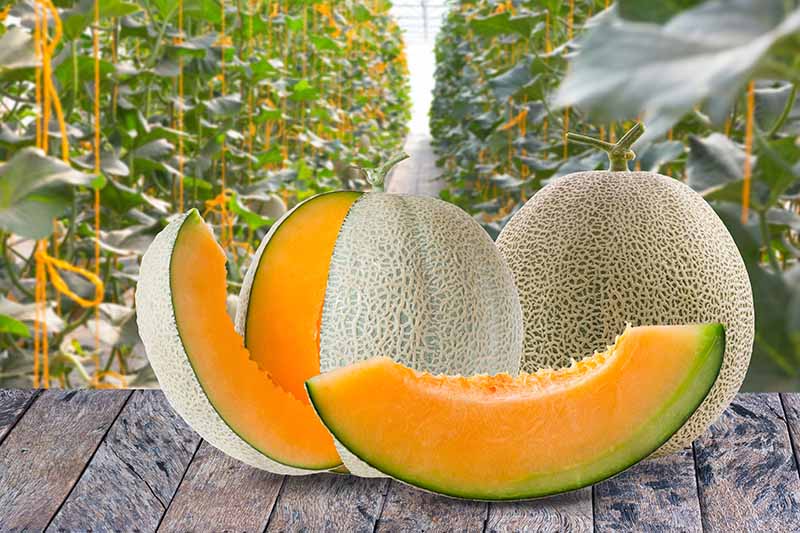
Sure, the lovable guy that I live and laugh and dance til dawn with whenever possible would take a mango over a melon any day (and it was he who taught me about the wonders of buying the ripe fruit from the Indian grocery store by the caseful, and sucking from the large, flat pits the sweet mango flesh that was just too difficult to remove with a knife – and too good to waste!).
He’s not much of a gardener either. That’s more my thing.
But that doesn’t mean he wouldn’t come running if he heard me call from the kitchen, “It’s ready! The first cantaloupe is ripe!” so we could stand over the sink together with juice running down our arms to our elbows and grins on our faces.
My own patio garden is small, baking in the Southern California sun in some spots, shaded and oh-so-dry in others. So far, any plans to invest in large barrels and melon nets and shorter-vined varieties has been nothing more than a dream, and some doodling in my gardening journal.
But someday, the time will come when I will grow my own. And that first lovingly tended homegrown melon – well, it’s going to be the best cantaloupe that we’ve ever had.
What type is your top pick? Any cantaloupe cultivars that I failed to mention here that you just have to share?
Or maybe you can’t believe I made it all the way through this roundup without throwing in a cantaloupe/can’t-elope joke?
Drop me a line in the comments below! We love hearing from you.
And for even more growing tips for the melon-lovers out there, bookmark these articles to read next:
- 33 of the Best Melon Varieties
- Train Those Melons on a Trellis: How to Grow Cantaloupe Vertically
- The Taste of Summer: How to Plant and Grow Watermelons
- How to Grow Cantaloupe in Containers
© Ask the Experts, LLC. ALL RIGHTS RESERVED. See our TOS for more details. Product photos via Burpee, Mountain Valley Seed Co., Eden Brothers, and Gurney’s. Uncredited photos: Shutterstock.
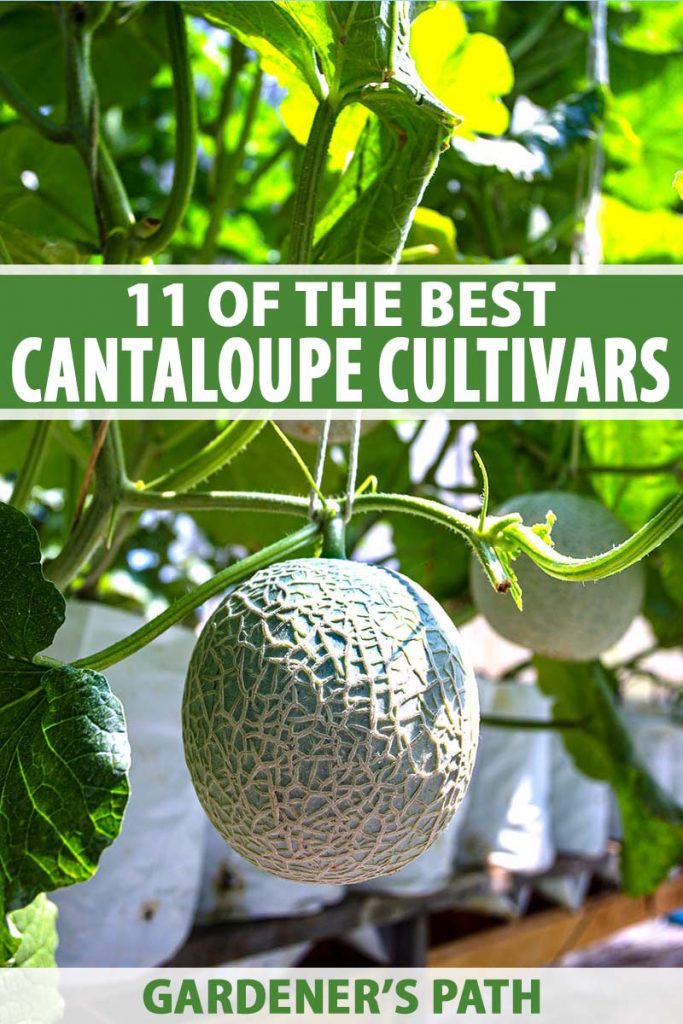
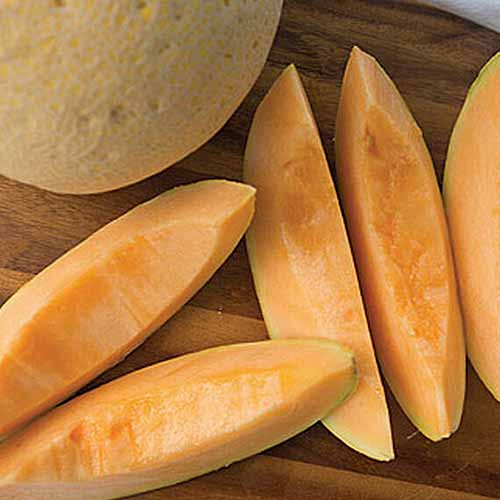
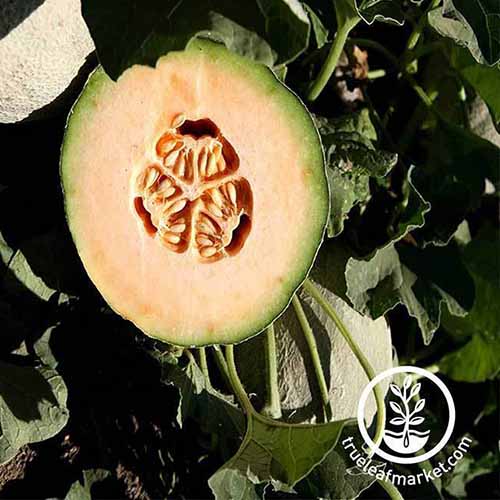
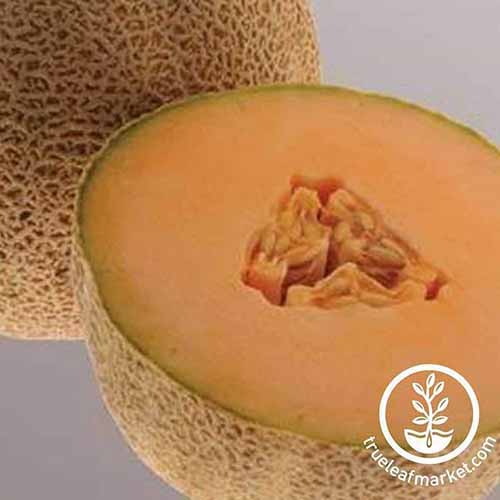
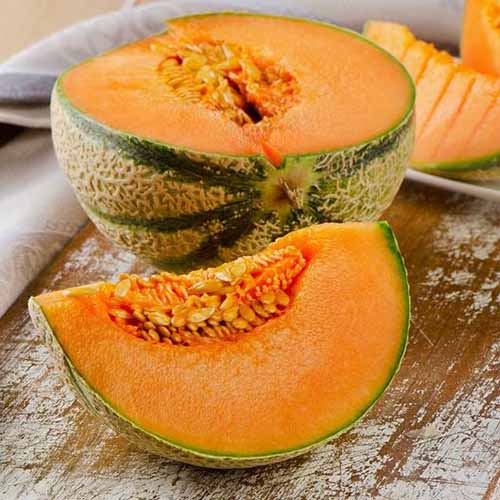
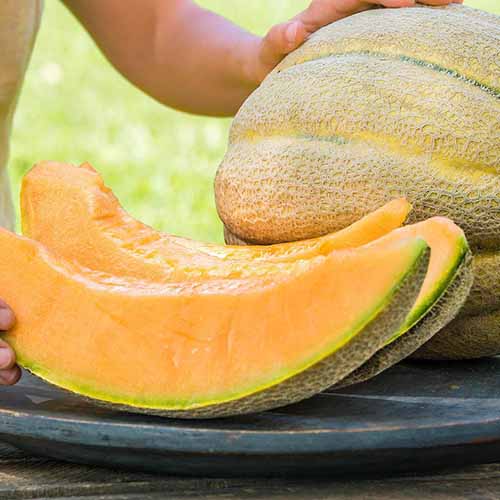
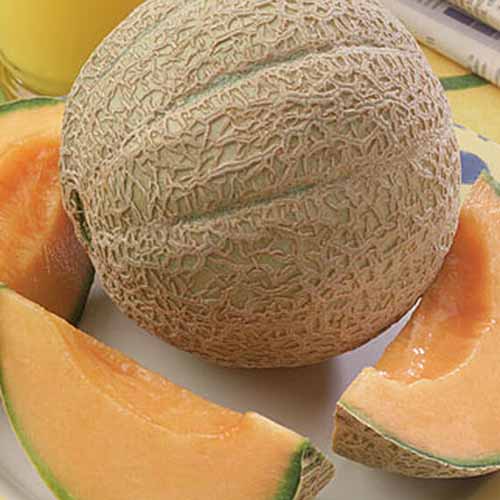



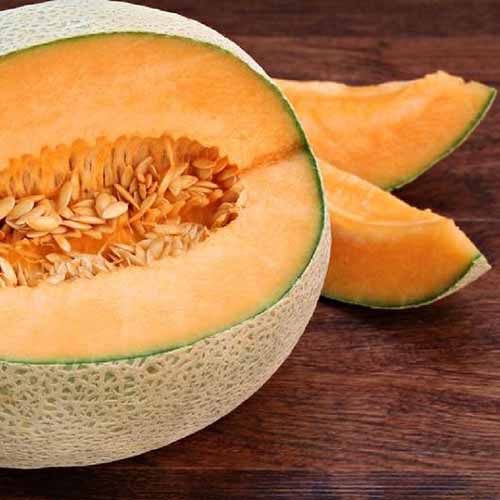
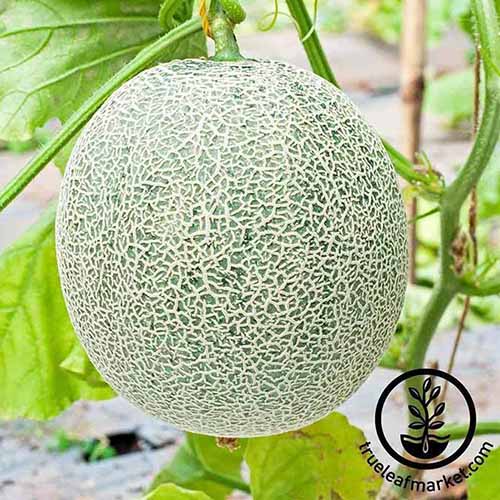
I am interested to start growing Melons. Please advise beginner melons grower.
Regards
Chongm
Hi Chongm, check out our guide to growing cantaloupe for all the information you need to get started. Happy gardening!
I wanted to show everyone a fun anomaly from our garden. We planted Kajari Melon to grow on a trellis (cattle panel) and ended up with mostly Karaji Melons. However, we also had several of of what we’ve called “mystery melons.” I saved Karjai seeds from last year, but had no muskmelon, so I don’t believe we mixed up any seeds. Our cousins, who provided the melons (the seed donors) grew Karari Melon and Delice de la Table melons. My cousins had some similar melons last year, but with green flesh – as you can see in the pics, these… Read more »
Thanks so much for sharing, Steve!
Looking for Saticoy muskmelon seeds . They were always my favorite home garden variety to grow back in the 80’s . Can’t find them anywhere now. Do you know?
I’m sorry to say that I haven’t been able to track down seeds for you, Marilyn! It looks like this variety dates back to the ’60s, released by Petoseed Co. based in Saticoy, California. It was ranked in cantaloupe trials for 1988-1990 at Auburn University and it’s possible that commercial seed production ceased at some point in the years to follow in favor of other varieties. The company was acquired by Seminis Vegetable Seeds in 1995, now a division of Bayer. You can find a list of their current melon offerings here.
Way too many ads. Even if for a good cause, one banner every other paragraph is excessive and ultimately distracting from the article.
Thanks for the feedback, Hasan. Feel free to use an ad blocker if it improves the reading experience! Ads like these help us to pay our writers, though I agree allowing banner ads to post every other paragraph would be extremely excessive. I believe you’ll find this is a bit of an overstatement. Thanks for reading!
I can’t say I disagree. We are thinking about reducing them…which means less income which means less folks producing (IMHO) pretty decent content. Most sites are “me toos” rewriting each other’s stuff whereas our writers are actually knowledgeable in terms of academic credentialing and/or experience. And everyone needs a paycheck. But you aren’t wrong.
I have been growing cantaloupes for over 50 years, and I usually plant at least 5 or 6 varieties, and plant several new to me varieties, I have grown most of the ones on your list, Sara is my current favorite. But my all time favorite is Harper Hybrid, the taste and aroma is incomparable to any variety, and I have grown them for 40 years or more. My uncle grew them before me. He got me started on them, but the seeds became unavailable the last 5 or 6 years. I understand the breeder has a plant patent on… Read more »
Plant patents expire 20 years after the filing date, though I was not able to track down patent records for a cultivar named ‘Harper Hybrid.’ The good news is that Harper is considered more of a cantaloupe type rather than a specific variety and many Harper-type cultivars exist, including ‘Alanis Gold,’ ‘Cruiser,’ ‘Ever Summer,’ ‘Infinite Gold,’ ‘Queen RZ,’ ‘Sweet Break,’ and others. So you may want to keep looking, planting and taste-testing Harper varieties of other names to find the qualities you seek.